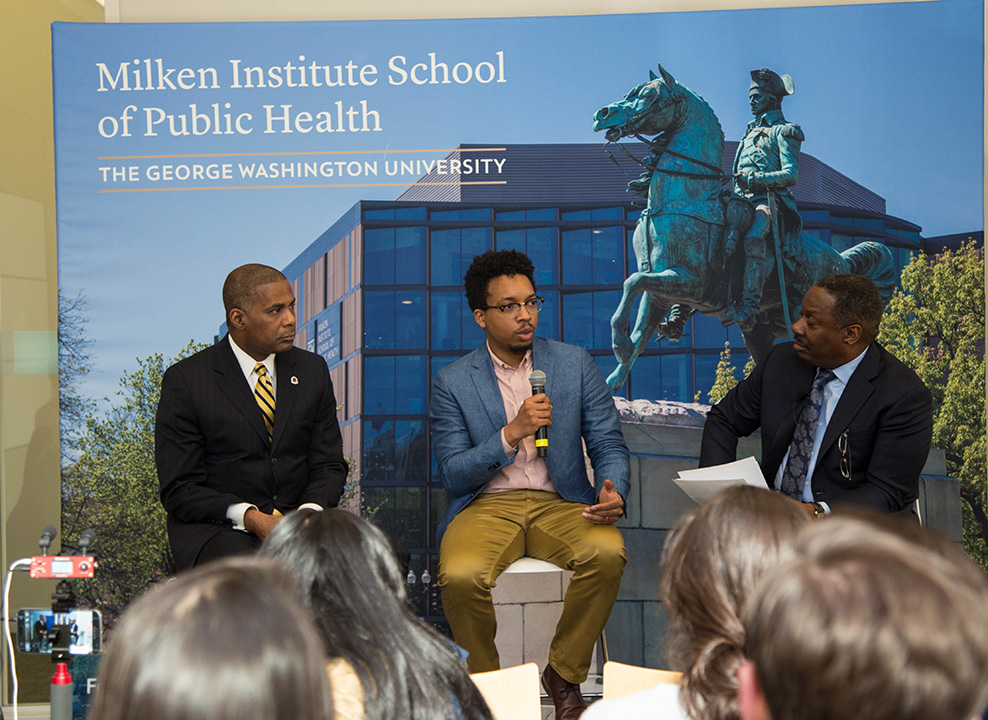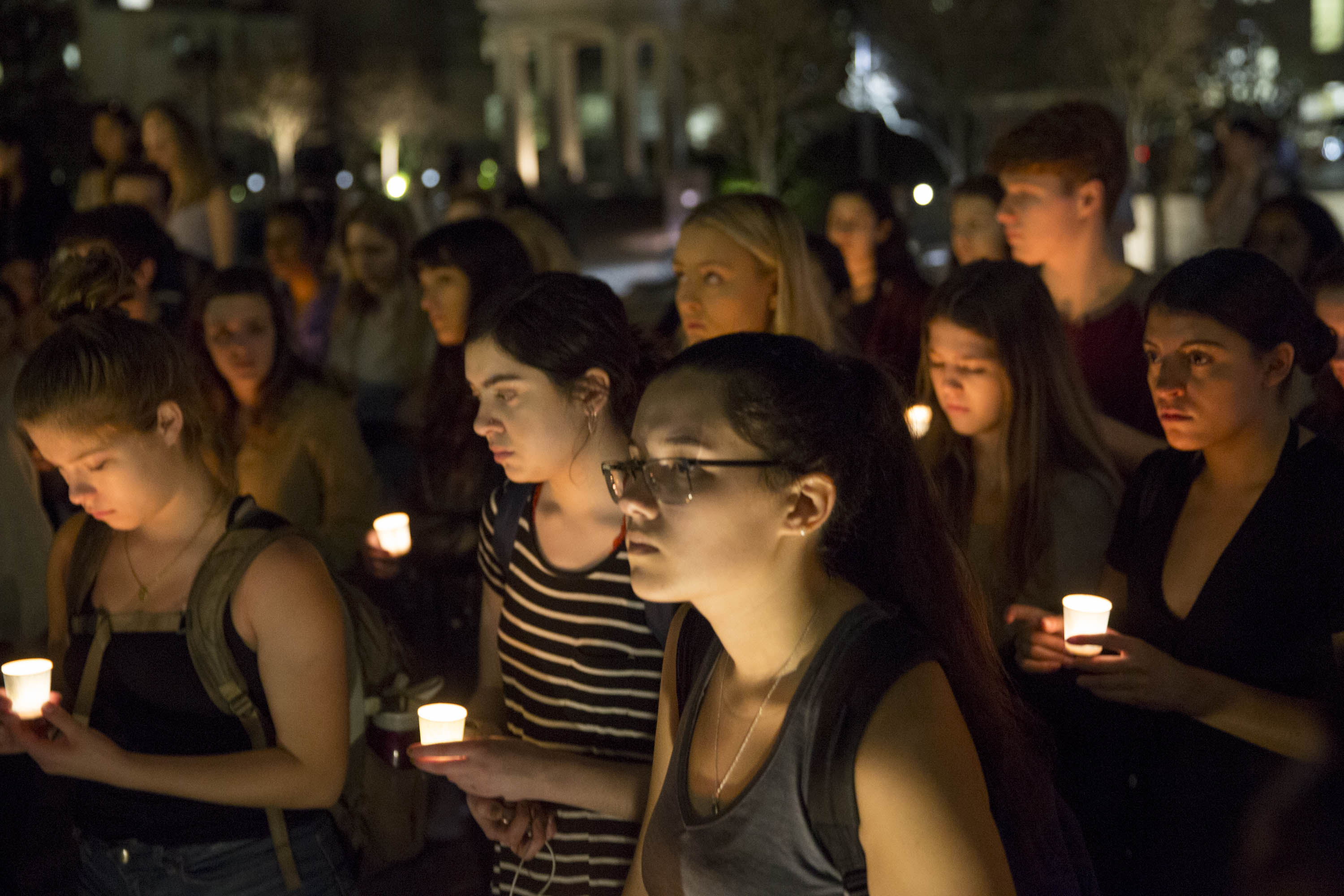By B.L. Wilson
As the American public worked through the trauma of the shooting at Marjory Stoneman Douglas High School in Parkland, Fla., and another on the YouTube campus in San Bruno, Calif., African American communities were fixated with the shooting and killing of unarmed black men in New York City and Sacramento, Calif.
“Think of the toll on many others, individuals, children and adults, the depression and anxiety, suicide, PTSD and more violence, and the cascading effects of this public health issue,” said Thomas LaVeist, chair of George Washington University’s Milken Institute School of Public Health’s Department of Health Policy and Management, opening a conversation on police violence, gun violence and race.
Joining him were panelists Vann Newkirk, a staff writer with The Atlantic Magazine, and Gregory Thomas, a senior law enforcement executive and international consultant on gun violence in New York City and the former police chief of Aurora, Ill.
Thursday’s event capped a weeklong series of activities organized by the GW Public Health Student Association in observance of National Public Health Week.
Lynn Goldman, dean of Milken Institute SPH, said there are some similarities between rights battles between smokers and non-smokers and those between gun-owning hunters and advocates for stricter gun control laws.
“Just as today we take it for granted it’s not right to smoke in public, indoors,” Dr. Goldman said, “I think we can come around as a society, while people have a right to have guns to hunt and do other things with them, it is not right to expose us to those guns that are hazardous to us and our children.”
Mr. Newkirk said defenders of the Second Amendment want to arm school teachers and others, violating the spirit of the Second Amendment and the right to bear arms to protect themselves against the government.
“The Second Amendment is based in English common law, that the king could not disarm the peasants because it basically provides the peasants not only a means of self-defense… but also the means, if the king became too tyrannical, to fight back against the king,” he said.
Besides, Mr. Thomas said, more guns are not the solution to the problem schools are trying to solve.
He laid out a possible scenario for an armed teacher if a shooting occurred.
“I say to the students, ‘I’ll be right back, don’t go anywhere,’” he explained. “I leave the classroom to engage the person with the gun. I’ve just left some young kids alone by themselves who were entrusted to my care.”
Since most shootings in schools often involve students, Mr. Newkirk said, arming teachers would put instructors in the position of having to “kill a student, which seems to violate our social contract.”
Dr. LaVeist said that in urban areas where children face violence every day school is a safe haven, so a proposal to arm teachers in schools could have a negative impact on students. “Now you’re putting a gun in the hands of a teacher who is now becoming the government. It’s guns everywhere,” he said.
Returning to the subject of the Second Amendment, Dr. LaVeist asked whether the amendment were still relevant since even if every American owned an AR-15 citizens would be no match for the might of the U.S. military.
It’s not an all-or-nothing proposition, said Mr. Thomas, who added that the Parkland high school students have made an effective case for tougher gun control laws. “The discussion has to start about sensible gun ownership,” he said, “about what that gun looks like rather than people thinking they’re going to come and take all your guns.”
In response to questions from GW public health students about federal research into gun violence, Mr. Newkirk said Congress was moving away from the prohibition against research. “It’s important to get it right… to send experts into communities where there are high amounts of gun violence,” he said.



